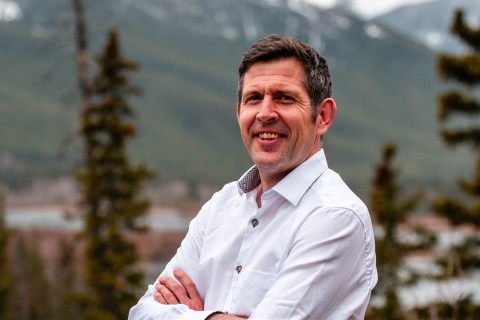On November 21, 2024, Pembina Institute's Deputy Executive Director appeared as an expert witness at the Standing Senate Committee on Energy, the Environment and Natural Resources, as part of its study on “Climate Change: Canadian Oil and Gas Industry”. His full opening remarks are below.
My name is Simon Dyer, I am Deputy Executive Director of the Pembina Institute, an Alberta-headquartered national clean energy think tank. We are experts on all types of energy production and use, including oil and gas.
I join you today from Edmonton, which is Treaty 6 Territory and home of the nêhiyaw, Dené, Anishinaabe, Niitsitapi and Nakota Isga Peoples, and the Otipemisiwak Métis Government. Thank you for this invitation.
The Pembina Institute was founded forty years ago in Drayton Valley, Alberta – the heart of the oilpatch – in response to the Lodgepole blowout, when gas erupted from a well just southwest of Edmonton, caught fire and burned for more than two months; all the while releasing toxic sour gas into the air. A group of concerned Albertans came together and pushed for a public inquiry, which led to stronger rules for sour gas safety.
Although today we are a national organization, when it comes to oil and gas, we remain true to our beginnings as that group of concerned Albertans – who acknowledge the benefits of living in a resource-rich province, but are concerned about the long-term impacts of oil and gas production on the air, water and land. Recently, we find ourselves concerned about the health of Alberta’s future economy in a world that is rapidly decoupling itself from reliance on fossil fuels, and where countries are instead moving toward low-carbon models of economic growth.
Let me share a few facts:
The oil and gas industry is Canada’s largest source of greenhouse gas emissions, accounting for almost one third of our country’s emissions.
A lot is often made of the industry’s economic contribution. We don’t seek to downplay this, but it’s important to deal in real numbers. On average since the year 2000, the industry has contributed about five per cent of Canada’s annual GDP.
So, that’s one third of emissions – for one twentieth of GDP.
You may have heard that the oil and gas sector is already making progress to reduce its emissions.
Again, the numbers are important. From 2005 to 2022, absolute emissions from the oil and gas industry increased by eleven per cent. During the same period, average emissions across Canada decreased by seven per cent. Not only is oil and gas our largest source of emissions, but its trajectory is also out-of-step with what the rest of Canada is striving toward.
But there is one part of the oil and gas industry that I would really like to talk about today, and which I would strongly urge the committee to focus on too: the oilsands.
For now at least, oilsands emissions in Canada are largely unregulated. You may be aware, for example, that Canada has had some success reducing methane emissions from our oil and gas production. That is true – but you should also know that there is little methane associated with the production of oilsands bitumen, so methane regulations have had almost no impact on the oilsands.
This lack of regulation is partly why, since 2005, oilsands emissions have gone up – by one hundred and forty two per cent.
Carbon capture and storage, if deployed at scale in the oilsands, has the potential to dramatically alter this. That is why we had supported the oilsands Pathways Alliance, who three and a half years ago proclaimed they would build a huge network of CCS facilities in Alberta.
The problem is that, despite millions of taxpayer dollars on the table for those CCS projects – projects that would undoubtedly create new jobs and investment in Alberta – the oilsands companies remain stuck in a holding pattern of negotiating for even more public funding to derisk CCS investments, instead of getting steel in the ground.
This is why we think regulation is urgently needed. For the sake of the climate, and for the future of Alberta’s economy.
Canada’s oil and gas sector is facing a shrinking market. A convergence of credible models, from both inside and outside the industry, now shows global demand for oil and natural gas entering long-term decline in the 2030s.
With this on the horizon, companies are adopting short-term attitudes. More than ever, they are focused on getting costs down through automation and other technological improvements. The latest oil price boom following recovery from the pandemic and Russia’s invasion of Ukraine in 2022 was the first boom to not be accompanied by large scale job creation here in Alberta.
Despite all this, we see a future for a leaner, cleaner oil and gas sector in Canada – one that produces low-carbon fuels, but also low-carbon feedstocks for products like petrochemicals and other materials. But industry’s delays in investing in decarbonization projects that would futureproof its own operations is preventing the oil and gas jobs of 2030 and beyond from reaching Canadian communities.
To summarize, there is a pathway for the oil and gas sector, including the oilsands, to decarbonize, but companies won’t do it voluntarily. It’s the government’s job to plan for our future economy – one that is climate safe and prosperous for all Canadians. That is why additional regulation is urgently needed.
Thank you.









